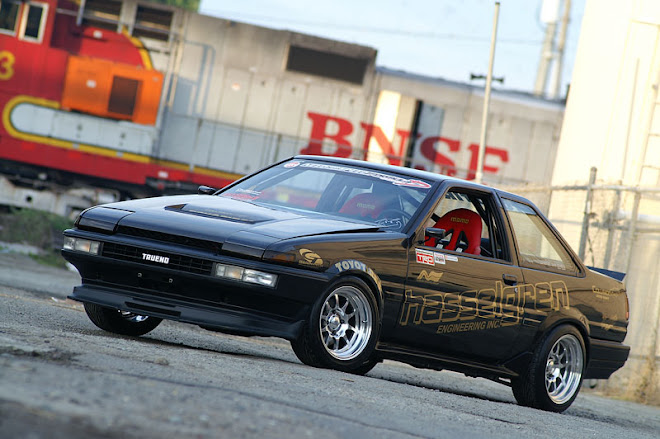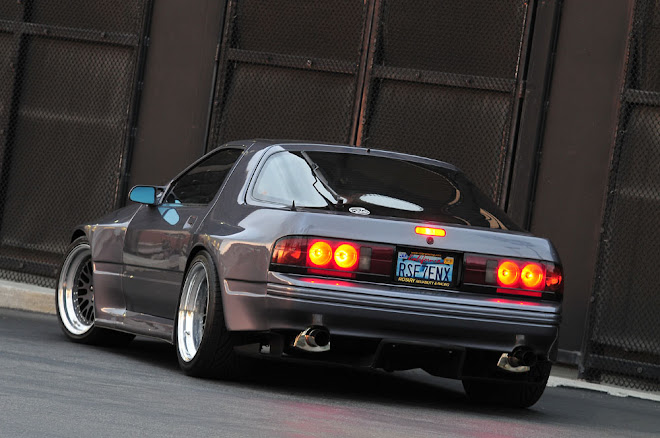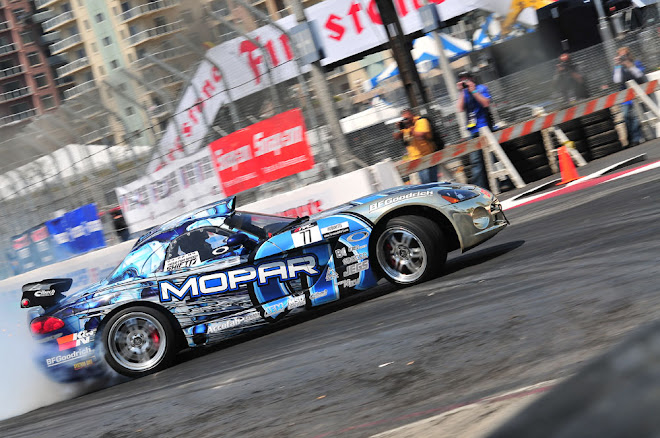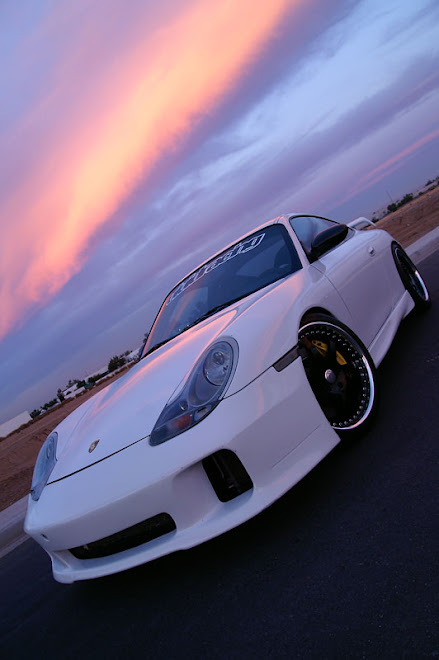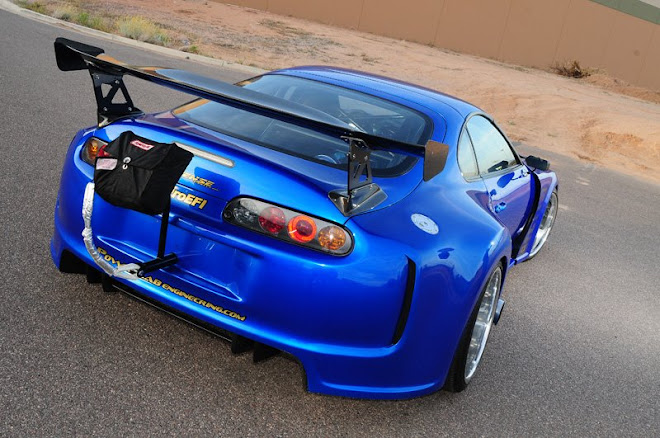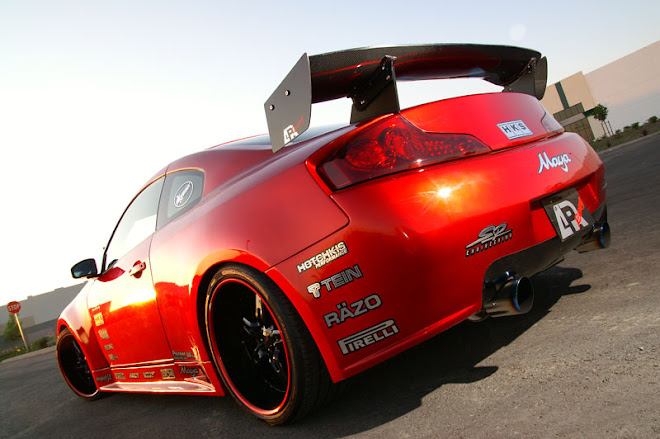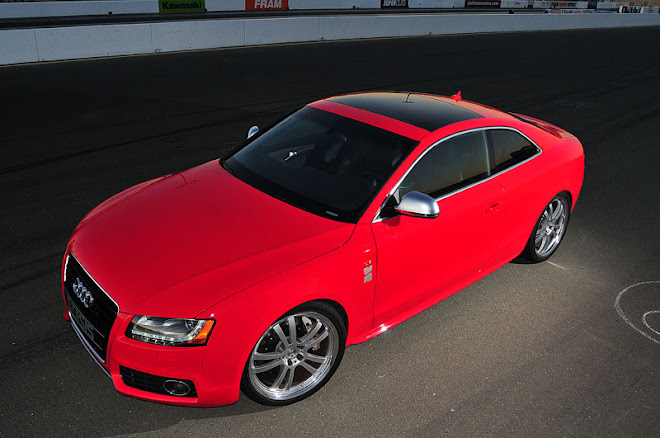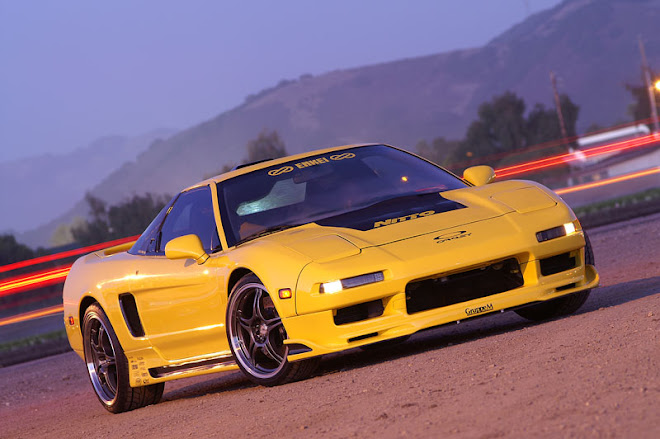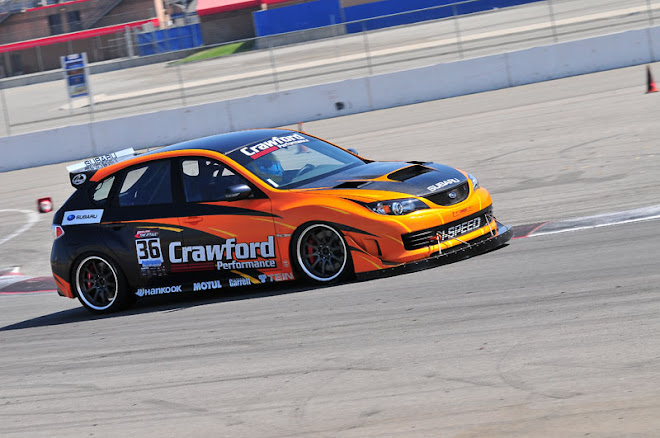Wednesday, December 11, 2013
Sigma issued a bulletin which states its older lenses could have "OS and AF issues in Live View" on Nikon's new D5300 and Df bodies. I've let Sigma know that I thought their older lenses have serious AF system flaws with the D7100 bodies I tried too. Outer AF points were severely back-focused. Only the center 9 points could be trusted. I used a Sigma 17-50mm f2.8 HSM OS, a 70-200mm f2.8 HSM OS, and a 30mm f1.4 "Dirty Thirty". All were incredibly sharp on the center points with low chromatic fringing. None focused properly on any of the three D7100 bodies' outer AF points. All focused properly on my D300 body, but that wasn't the point. I needed them to work right on the ultra-sharp D7100's 24mp non-AA filter. They simply wouldn't.
This isn't to say that Sigma builds a bad lens. They build a very good lens, and they make their quality lenses in Japan. There's a lot to be said in that. Nikon has evidently decided to change something in their AF system and how it operates, and this leaves third party lens makers scrambling. Only screw-drive designs will not have a problem, as the body itself has control over proper focus. Again, this defeats the purpose of buying modern lens designs with high-refractive glass, anti-reflective coatings, and Hyper-Sonic ring motors for faster focusing. If it cannot repeatedly nail the focus with the AF system in the body to which it is affixed, then it's not worth the money.
For 2013, I cycled through a bunch of lenses trying to come up with an "optimal quality" setup without spending the big Nikon buck. Alas, I've come to believe that Thom Hogan might be right; it just might not be possible to use third party lens makers at this time. My D300 can shoot anything, everyone has it figured out. I'm not sure about the newer cameras now, and it becomes incredibly frustrating to carry a camera and lens out on a shoot and not be able to use more than one-third of its AF points, or 3D focusing, or multiple points, simply because there's some sort of communication issue between a lens and a body. The choice becomes this; shoot with cheaper Nikon lenses which work, or shoot with expensive Nikon lens which work. There's no in-between. And that's sad.
In a disappointing turn, the cheaper Nikon 35mm f1.8G I purchased would only focus properly on low-contrast objects about 25% of the time. Sharp, but wildly inconsistent. And made in China. Read into that what you want. This boy will only buy Japanese-made glass from now on, and probably just the pricy stuff from Brand N. It'll be a long time before I'll be able to save up for some of these expensive pieces.
Nikon's new Df body; Need it or not?
What a brilliant camera, released two years too late! THIS is what I wanted as a D800 body; robust build, dedicated manual controls with a menu system still available for increased flexibility, backwards and forwards lens system compatibility, quick and precise AF, and no stink in' video. I'm sorry, but from what I've seen of DSLR video on my D600, my 15 year old Sony Handycam focused better. Sure it's got higher resolution by far (1080p) than my old Sony, but what good does it do when the lens is constantly racking the focus back and forth every time the subject moves a little. Frustrating to use for this non-video guy… I'll stick with taking photos!
That said, the Df is basically a D610 in knight's armor, and as a working pro, this has some appeal to me. I loved my old Konica-Minolta 7D bodies (plural, I owned two of them!) and their dedicated controls. That made work in the field so easy and fast. Want to change the ISO, just grab and twist a knob. Exposure compensation? Just a quick twist away. The old KM trumps the Df in the fact that it had built-in image stabilization with every lens, but as I've scrimped and saved enough over the years to be shooting with VR lenses for the most part, this has become a moot point. I'm still not convinced that the free-floating VR does not manage to mess up some shots all on its own. A good tripod still greatly increased the capture rate, and will cost a new shooter thousands of dollars less. Even the most expensive tripod will still be vastly cheaper. I still take a monopod with me to the track. Can't beat it really.
So, if the specs are mainly the same, why is it so much more expensive than a D610 (or D600, which is what I'm shooting, along with some carefully placed puffs of air on my sensor to clean off the infamous "dust spots")? What's Nikon's reasoning with this? Magnesium is super-expensive? The Df's 16mp sensor offers 8 less megapixels than a much cheaper D600. Is its ability to gather light that much better? Perhaps. I'd like to get my hands on one for an automotive shoot (hint, hint NPS, I'd like to borrow one please) and see just how dramatic the dynamic range is. Dynamic range is key to successful car photography. Metal and paint and glass tends to reflect every photon of light right into the lens. Miracle coatings on the lenses and ultra-low dispersion glass helps, but only so much. The larger pixel sites on the 16mp sensor should capture better blacks, and better colors overall. That loss of 8mp represents more than my first three camera bodies had each (6.1 seemed to be a de facto starting point for camera designs in 2003 and 2004). 16mp is more than enough. 12.4mp from my veteran D300 has proven to be more than enough to, and in print, I cannot distinguish between D300 and D7100 photos (the D7100 was 24mp, so an apples-to-apples comparison). The D600 can be just slightly distinguished due to the better background blur and less telephoto compression.
So, does the D4's sensor justify the price jump all by itself, without as fast a shutter as a D700, or the deeper buffer of the D700? Or the better 51-point AF system from the D3/D700/D4? Or the built-in flash as a dedicated wireless flash controller? Or the dual SDHC card slots of the D600/D610? Hard to say. This appears to be a real photography buff's camera. A throwback to the days of all manual control but with the added convenience of a full compliment of digital controls on the back. It will appeal to people who fear large file sizes and ever-increasing disc storage requirements. It will shoot beautiful photos, of that there is little doubt. Is it a D4 for less than half the money? Most certainly it is not. Will it find traction in today's very competitive market? I don't think so. It's like a six-cylinder sports car; even mighty BMW has abandoned the weary straight-six in favor of more cylinders and increased torque. Megapixels are torque, and Nikon already has a V-8 beast in the form of the 36mp D800 or the even sharper D800e, both of which feature an internal Magnesium frame and weather seals. To toss the Df into this market today seems unfair. Two years ago it would have been as heralded as the D700 was after the D3. An excellent D700 can be had for less than $1,500 now, making the Df's lofty $2,799 price seem, well, princely. By comparison, any D600 is a screaming deal, with the same FPS as the Df, and a host of features which make it work better with the Nikon system. People who have the D600 or D610 won't switch. D800 users will turn up their noses, as it is not significantly faster, nor does it offer dual card slots (remember when NO camera had them, how did we survive the dark ages?) or the pop-up flash.
I think this will wind up being an albatross… Meanwhile, the D300/D300S users are screaming for a true pro-level DX-sensor D400 (no the D7100 didn't measure up). Will we get one, ever? I know from shooting cars for a decade that the DX format works very well with car-sized objects. The increase in DOF is nice. The longer reach from a 200mm lens at the track means I can carry less gear and still get shots with the equivalent value of a 300mm lens without the extra weight of the bigger glass. Just by carrying one extra camera body. So, c'mon Nikon… Where's the D400? Will we ever see it?
On a side note, I'd like to point out that I've earned three magazine cover shots with my D7100 during the short time I had it, including a full-cover shot on the current Fast Fours & Rotaries of Daniel Song's awesome FRS-GT built for the 2012 Scion Challenge. I liked the D7100, but had issues with my Sigma lenses and the D7100 AF system. I'll be touching upon that in my next post though, so no need to mention it here. Just thought I'd share the news with anyone who happens to read this far through my gear rants! :D Have a great night!
Monday, August 19, 2013
Thumbs up: Vivitar extra capacity EN-EL15 battery
I have to give credit where it's due; the Vivitar extra capacity EN-EL15 battery works very well. Lasts a long time, just like the Nikon one does. I was miffed that Nikon went to a new battery, but the long life of these batteries in the D7100 is rather amazing. Banging off 1000 shots at a time, even with chimping and VR use, is amazing.
On the other hand, the Vivitar VIV-PG-D700 is worthless, as is Vivitar's repair service. The plastic gear inside the thumbscrew assembly which attaches the grip to the body can be easily stripped. Vivitar will not offer a replacement gear, even though the grip can be taken apart and the assembly could be replaced. In short, if you need longevity, buy a used Nikon MB-D10 instead. It did run the camera in its high-speed mode when powered by 8 Sanyo Eneloop batteries and didn't generate any electronic faults with the D300 interface, so I suppose that's one mark in its favor. Vivitar, spend a few bucks more per unit for metal gears please!
D7100 out, D600 in!
Okay, so perhaps I haven't been the most diligent blogger on the web, and perhaps I haven't updated this in six months (precisely, in fact) but I vow that will change. Why? Because I've bought a D600, and like most people, I'm gonna have to talk about it.
First, why change from a sharp 24mp D7100 to a sharp 24mp D600? Simple; less DOF. In my quest to make my photos pop, I've found a style I like. Unfortunately, this style revolves around shooting f1.4 lenses on full-frame sensors. Big problem. I didn't own either of those items. So, a change was in order, and Adorama's market-crushing sale price on factory reconditioned D600s packaged with 24-85mm f3.5-4.5 VR lens was just the thing to sway my mind. Second, the larger pixels of the D600 make for better light gathering. How much better? I don't know yet exactly. The D600 uses a Sony EXMOR-R derived sensor, which features a backlit sensor design. All of the signal paths from the pixel sites run through the back of the sensor, so the microlenses onthe front use up almost all of the available space for a huge increase in light-gathering. The D7100 uses a sensor from Toshiba, and I felt that noise definitely crops up in the higher-ISO photos in low light. It's not bad, and certainly not enough to sway people away from the D7100 as it is a very fine camera. Third, did I mention less DOF? Ha! It has become so important to me that I'll say it twice!
Here's my thinking... I did the math and realized that, in order for a DX APS-C sized sensor to have 1.5x reach with FX lenses, it must also increase the circle of confusion by 1.5x, unnecessarily blurring lenses which weren't designed to be used that way. Case in point; I've always had a Nikon 50mm f1.8D around, and I've never been impressed with it on my D200, D300, D7000, or D7100 (all the DX cameras I've owned basically). It's just not as sharp as I'd prefer, and has fringing issues. The D600 guys simply rave about this lens though. Clearly there's something going on with an FX lens on an FX sensor which is simply "right". I also crunched numbers and realized that a 24-85mm f3.5-4.5 lens on a D600 will offer less DOF at 50mm and f4 than a 17-50mm f2.8 lens at 35mm and f2.8 on a D7100 (both at 10 feet from the subject). That makes the "kit lens" supplied from Nikon with the D600 a very useful addition. Since prices had been hovering around $1590 for a reconditioned D600, when the Adorama deal dropped at $1599 INCLUDING the 24-85mm lens, I had to jump on it. Selling off my APS-C gear (except for my trusty and fast D300) makes it a complete wash in terms of dollars spent, something I didn't think would be possible at the beginning of the year.
In short, I'm going to FX and I'm not looking back. The D300 will stay around though as a very useful track-day, high-speed panning tool where the 1.5x of extra reach is appreciated with my 70-200mm f2.8 lens. It's 51-point AF system and the ability to shoot at 7fps all day with a battery grip and fast CF card make it a worthy companion to the D600. In spite of Nikon's insistence upon releasing only slow cameras (D600 at 5.5fps, D7100 at 6fps, and D800 at 4fps), someday they'll have to either revamp the high end DX line and do a D400, or just straight to a higher speed 24mp FX body (D700X anyone). With my system repositioned now in 2013, I'd be first in line next year for a D700X with robust frame and seals and the capability of doing 7fps. Bring it on, Nikon!
Tuesday, March 19, 2013
The D7100 Arriveth! My short review...
And the Lord looked out over his creation and said, "What has Nikon never built?". The answer came back from the People; "A super-high resolution DX body." So the Lord touched the sensor engineers and the executives and the marketing people and said "Let it be so." And it was. And all was good, briefly. Then he People said, "But Lord, why are the outer AF points back-focusing?" And the good Lord replied, "Focusing system is off? Even I can't help Nikon with that."
So, the moral of this story is that the D7100 is, at this point, a terrific high-res body with some cool new features... and only 9 AF points in the center you can trust with your work or hobby photos. I'm sure they'll be able to fix this with a proper calibration, but we're just a few days into the launch, so a properly calibrated set of AF setting for repair centers is going to be a month or so down the road.
Meanwhile, get out there and use those center points, folks! Focus then recompose, just like our D600 brethren!
I'll be back with more later as I investigate the camera over the next few days but for the moment, rest assured that image quality is of no concern at all. It's excellent!
Friday, March 15, 2013
My D7100 On The Way!
Okay, so anyone who has ever read my blog knows that I'm a bit of a pixel-peeper. With just 12 megapixels available from my D300, I have to be. I'm competing in a print world against fellows with 20 and 21mp Canon bodies, or 16mp Nikon D4s and 36mp D800s. With the ability to "throw away pixels" and gain sharpness through image resizing/resampling to a slightly smaller final product, these guys (and gals) can shoot with softer f1.4 lenses and still creat tack sharp images with excellent bokeh. When I send in a folder to an editor, probably the first thing they do in the evaluation stages is to pick through all of the photos to find the compositions they like. Then they move on to chosing the best based on light and sharpness, and send those on to a layout team. My lowly 12mp images have to be spot-on even to compete with those from the Canon 7D or older Sony models. Technology moved on and Nikon, instead of simply upgrading the sensor in the D300/D300S models to the latest and greates, instead chose to revise the good-selling D7000. This camera actually remains in the lineup for a while longer, which I think is a smart move by Nikon. Not everyone needs what the D7100 has to offer... but I do!
24 un-aliased megapixels! Yowza! High speed crop mode which makes my 70-200mm f2.8 image-stabilized Sigma lens into a monster 140-400mm f2.8! And in this 7fps cropped mode, it will STILL have 15 megapixels! Bravo! That's a nice feature a pro like me will put to good use at the track. Weather-sealing? On par with the D800. I'll take it. 51 AF points and D4 focus-point processing? Sure, as that's one area where the D300 wasn't terrific. There are too many random colors on race cars for a D300 to be very good at picking one point of the 51 available and sticking with it. I've never found that the "magic AF mode" which allows the camera to determine the subject has ever worked well with the D300. In fact, the times I've used it, it always seems to miss the single best child's expression, or never-to-occur-again track-side collision. If I shoot in Focus Priority, sometimes it won't allow the shutter to be released at all. If I shoot in Shutter Priority, I get shots, but they may or may not be in focus where I want them to be. Such is the life of a D300 user. I will say this; it has performed far better after being reset to factory specifications by CRIS Camera in Tempe, Arizona. It's better, but by no means perfect.
I'm not suggesting that the D7100 will be perfect. Like many, I have concerns about the shallow buffer for RAW files, although I don't shoot RAW files at the track, and the robustness of the plastic internal body and front plate. I would have preferred that the metal lens mount be attached to a metal mirror box/internal frame assembly, but perhaps Nikon has their reasons for the switch. In my discussions with Thom Hogan, but he and I feel that there will be a D400 forthcoming later this year. I think it will come in around $1,700, and I think he believes it will cost a little less. The point being, both of us see a market for a high-speed, durable body DX "pro" camera, and think that Nikon will see it that way too.
Meanwhile, I will be happily shooting my D7100!. I've had two D300s and haven't had one of those 150k-cycle shutters fail yet so I harbor no trepidation about the one in the D7100. Personally, I've never been concerned about shutter life because, by the time I get to that number, another camera will have arrived with further sensor improvements. Don't kid yourselves either; this D7100 appears to have a monster sensor. Sample photos I've seen indicate it can shoot at ISO 1600 with little to no grain "noise" which afflicts my D300. I did try a D7000 briefly as a stop-gap measure, and while the sensor does some great things, the AF didn't. Hence my refusal to buy a D600 with that inept AF system. The "focus and recompose" approach doesn't work with high-speed cars on the track. The wider 51-point setup of the D300 has points where they are most needed, and the D7100 follows its lead whether in DX or super-crop mode. In fact, the super-crop mode may offer the best possible world; being able to shoot an 85mm f1.8 or f1.4 lens as a 170mm f1.8 or f1.8! Super bokeh, baby!
Something else I liked about the D7000 and was happy to see on the D7100; dual SD card slots. SDXC cards are the fastest things I've for the least amount of money. Cranking 45 mb/second onto a 16mb Lexar or SanDisk SDXC card, at a cost of less than $20 per card is a Godsend for my business. I have one of the fast SanDisk Ultra cards, and I suppose I'll buy two more (or the Lexar equivalent) just for good measure. The 16gb cards test out as "faster" than the cards with more space, and with the buffer size limited, I'll take the fastest card I can get! I'm hoping I'll never need that sort of write speed, but if I do, I plan to have it. Boy Scout's motto: Be Prepared!
I know it will be difficult for my one regular reader to wait patiently for an update, but I promise I'll get to one somewhere after the 19th of March, hopefully with photos too!
Monday, February 4, 2013
D7000 is no D300
I came, I saw, I didn't like it. Why is it so difficult for Nikon to realize we'd like an 18mp non-anti-aliased sensor in a D300S body? Why, why, for the love of Pete, why, Nikon? You work so hard for years to create a "pinnacle DX system", then throw it all away by refusing to release a D400. Why? Is it because the camera with the specs I've listed above would be too close to the very expensive D4 in resolution and performance at a much lower price point? Whatever the reason, I feel jilted. I don't want a mirrorless Nikon compact. I don't want the price and slow FPS of the D800. I want a speedy pro DX body. This year. Is anyone at Nikon listening?
Wednesday, January 23, 2013
Dead D300
Well, I didn't quite make it to the end of 2012 with a fully-functioning D300, so the Mayans were partially correct. The AF system in my beleagured D300 decided that shooting on the right spot 50% of the time was okay, so that's what it started doing. That was the final straw for me. I ordered a reconditioned D7000 from Adorama since there's STILL NO D400 BODY AVAILABLE! Jeez, Nikon. What's it take to get an updated pro-level D400 out of you?
I must admit though, aside from overall speed, and the number of AF points, the D7000 is in most categories an upgrade from the D300. I'm not married to this thing. To me, it's just a tool to take car photos. Just as long as it does that reasonably well, I'll continue to resist my urge to dump all of this gear and jump to Sony or Canon. Yes, I said "Sony". I looked briefly at the A77 at the CES show, and it is a monster camera. I'm not sure if I like the EVF because of some of the strange ways Sony chooses to use it. Like for previewing photos... I like using the big screen on the back of the camera and it is disconcerting to have them keep popping up in the viewfinder. Sony's programmers should create an "OVF mode", which simulates the always-on look of an optical pentaprism. No complaints with the sharpness their 16-50mm f2.8 lens can generate, nor with what I saw from the 24mp sensor. I did not get to play with the A99 so I cannot render an opinion on it. Looks nice on paper though!
Back to work for 2013 and looking to buy another Nikon wireless Speedlight and a 20mm super-wide prime lens. Although the Promaster 17-50mm f2.8 (Tamron) I picked up at the end of 2012 isn't bad, it doesn't have the superlative quality of a true prime. Plus, it's only really sharp at the wide end. Going past 24mm causes bad things to happen. Bad things, man. Sigma has a nice looking 20mm f1.8 prime so I'll probably check that out. I might be able to find one for $500 if I shop carefully. I'll find something though. I always do!
Subscribe to:
Posts (Atom)

